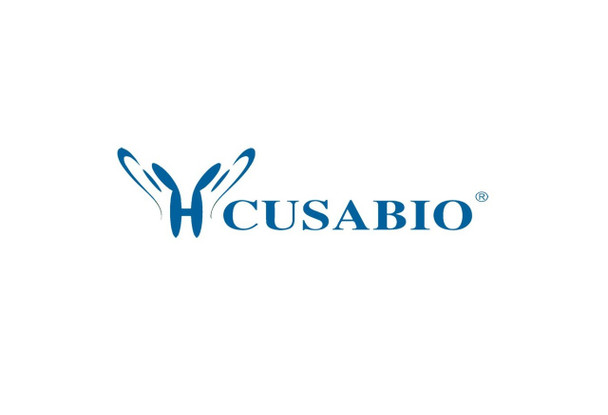Cusabio Human Recombinants
Recombinant Human Apoptosis regulator Bcl-2 (BCL2), partial | CSB-EP002611HU1
- SKU:
- CSB-EP002611HU1
- Availability:
- 3 - 7 Working Days
Description
Recombinant Human Apoptosis regulator Bcl-2 (BCL2), partial | CSB-EP002611HU1 | Cusabio
Alternative Name(s): Apoptosis regulator Bcl 2; Apoptosis regulator Bcl-2; Apoptosis regulator Bcl2; AW986256; B cell CLL/lymphoma 2; B cell leukemia/lymphoma 2; Bcl-2; Bcl2; BCL2_HUMAN; C430015F12Rik; D630044D05Rik; D830018M01Rik; Leukemia/lymphoma; B-cell; 2; Oncogene B-cell leukemia 2; PPP1R50; Protein phosphatase 1 regulatory subunit 50; Protein phosphatase 1; regulatory subunit 50
Gene Names: BCL2
Research Areas: Others
Organism: Homo sapiens (Human)
AA Sequence: AHAGRTGYDNREIVMKYIHYKLSQRGYEWDAGDVGAAPPGAAPAPGIFSSQPGHTPHPAASRDPVARTSPLQTPAAPGAAAGPALSPVPPVVHLTLRQAGDDFSRRYRRDFAEMSSQLHLTPFTARGRFATVVEELFRDGVNWGRIVAFFEFGGVMCVESVNREMSPLVDNIALWMTEYLNRHLHTWIQDNGGWDAFVELYGPSMRPLFD
Source: E.coli
Tag Info: C-terminal 10xHis-tagged
Expression Region: 2-211aa
Sequence Info: Partial
MW: 25.2 kDa
Purity: Greater than 85% as determined by SDS-PAGE.
Relevance: Suppresses apoptosis in a variety of cell systems including factor-dependent lymphohematopoietic and neural cells. Regulates cell death by controlling the mitochondrial membrane permeability. Appears to function in a feedback loop system with caspases. Inhibits caspase activity either by preventing the release of cytochrome c from the mitochondria and/or by binding to the apoptosis-activating factor (APAF-1). May attenuate inflammation by impairing NLRP1-inflammasome activation, hence CASP1 activation and IL1B release
Reference: "Analysis of the structure, transcripts, and protein products of bcl-2, the gene involved in human follicular lymphoma." Tsujimoto Y., Croce C.M. Proc. Natl. Acad. Sci. U.S.A. 83:5214-5218(1986)
Storage: The shelf life is related to many factors, storage state, buffer ingredients, storage temperature and the stability of the protein itself. Generally, the shelf life of liquid form is 6 months at -20?/-80?. The shelf life of lyophilized form is 12 months at -20?/-80?.
Notes: Repeated freezing and thawing is not recommended. Store working aliquots at 4? for up to one week.
Function: Suppresses apoptosis in a variety of cell systems including factor-dependent lymphohematopoietic and neural cells. Regulates cell death by controlling the mitochondrial membrane permeability. Appears to function in a feedback loop system with caspases. Inhibits caspase activity either by preventing the release of cytochrome c from the mitochondria and/or by binding to the apoptosis-activating factor (APAF-1). May attenuate inflammation by impairing NLRP1-inflammasome activation, hence CASP1 activation and IL1B release
Involvement in disease: A chromosomal aberration involving BCL2 has been found in chronic lymphatic leukemia. Translocation t(14;18)(q32;q21) with immunoglobulin gene regions. BCL2 mutations found in non-Hodgkin lymphomas carrying the chromosomal translocation could be attributed to the Ig somatic hypermutation mechanism resulting in nucleotide transitions.
Subcellular Location: Mitochondrion outer membrane, Single-pass membrane protein, Nucleus membrane, Single-pass membrane protein, Endoplasmic reticulum membrane, Single-pass membrane protein
Protein Families: Bcl-2 family
Tissue Specificity: Expressed in a variety of tissues.
Paythway: Estrogensignalingpathway
Form: Liquid or Lyophilized powder
Buffer: If the delivery form is liquid, the default storage buffer is Tris/PBS-based buffer, 5%-50% glycerol. If the delivery form is lyophilized powder, the buffer before lyophilization is Tris/PBS-based buffer, 6% Trehalose, pH 8.0.
Reconstitution: We recommend that this vial be briefly centrifuged prior to opening to bring the contents to the bottom. Please reconstitute protein in deionized sterile water to a concentration of 0.1-1.0 mg/mL.We recommend to add 5-50% of glycerol (final concentration) and aliquot for long-term storage at -20?/-80?. Our default final concentration of glycerol is 50%. Customers could use it as reference.
Uniprot ID: P10415
HGNC Database Link: HGNC
UniGene Database Link: UniGene
KEGG Database Link: KEGG
STRING Database Link: STRING
OMIM Database Link: OMIM









